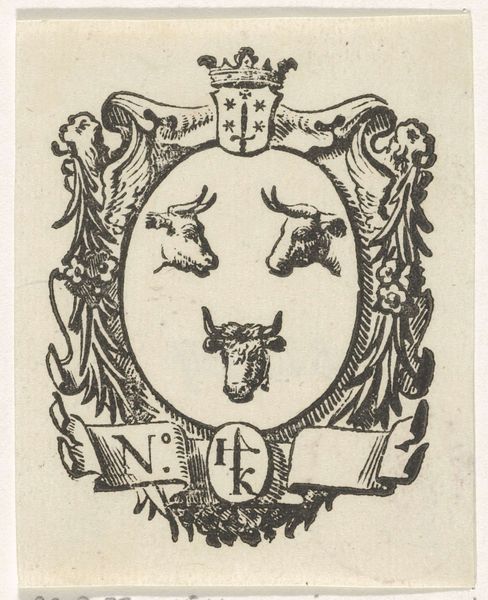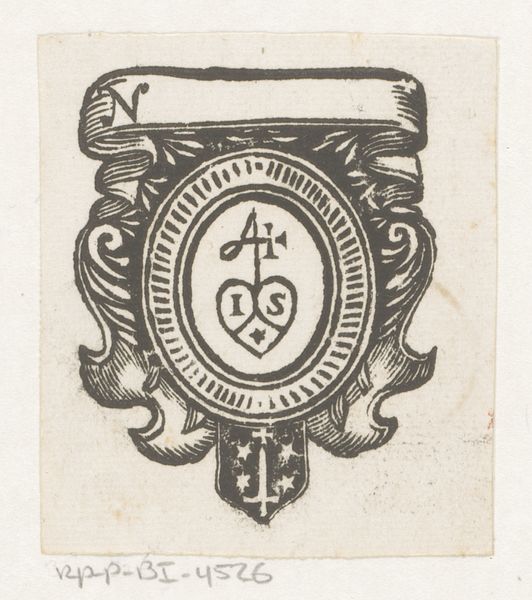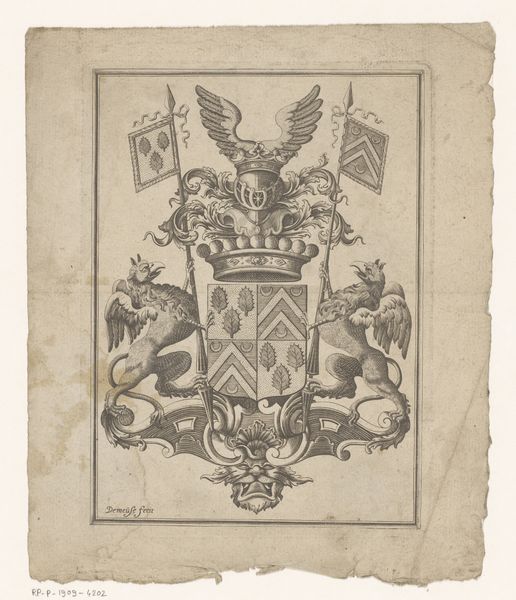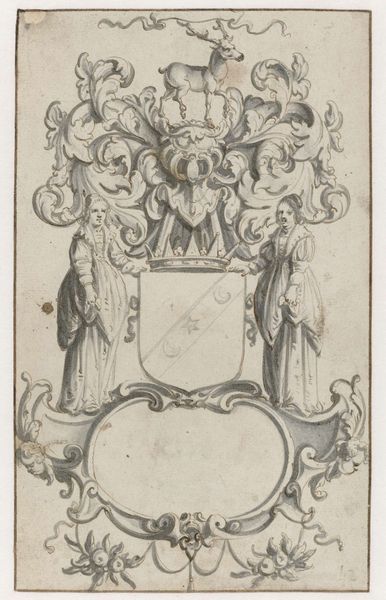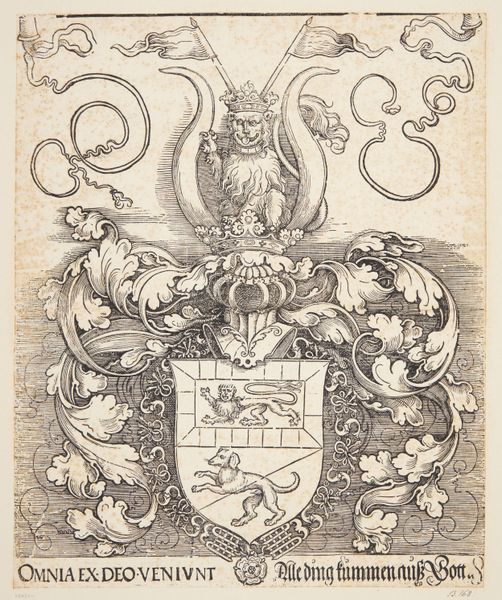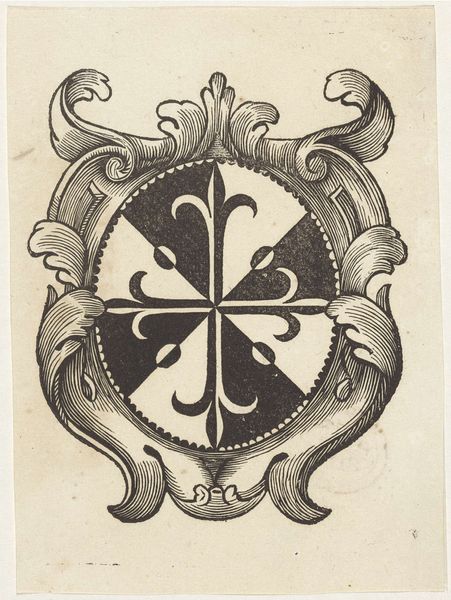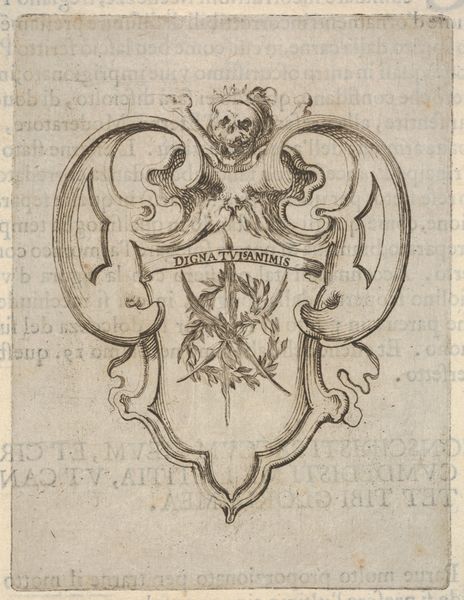
drawing, print, ink, engraving
#
drawing
#
medieval
#
baroque
#
pen drawing
# print
#
old engraving style
#
ink
#
geometric
#
line
#
decorative-art
#
engraving
Dimensions: height 95 mm, width 75 mm
Copyright: Rijks Museum: Open Domain
Editor: This intriguing print, "Handelsetiket van Claes Tetrode," is attributed to Isaac Vincentsz. van der Vinne and dates back to sometime between 1681 and 1740. Created with engraving, ink, and drawing, it features a very baroque heraldic design. It gives the feeling of a proud old European family seal, very stoic and bold. What is your interpretation of the symbolism at play here? Curator: This little emblem, though a trade label, resonates with echoes of power and legacy. Note how the fleur-de-lis, lion rampant, and crown evoke royalty and nobility, recurring emblems from the medieval period through the baroque. Do you notice how they’re not just decorations? Editor: They feel very deliberate. Almost…encoded. Curator: Precisely! These images served as shorthand. The collective memory recognized those emblems as symbols of authority, strength, and perhaps even divine right. The images of each thing are visually consistent to each other in the coat of arms and even over the ages. Do you agree that these were important attributes for a merchant to associate with his brand? Editor: Absolutely. Associating yourself with those images implies quality, reliability, longevity. It's a powerful statement through readily recognizable iconography. A great branding exercise for that period, even today. Curator: Indeed. It prompts us to consider how images operate on conscious and subconscious levels to shape perceptions and reinforce cultural narratives across generations. The cultural memory continues through this heraldic representation. Editor: I had not considered how intentionally those choices were made. Thanks! I'll consider these symbolic elements further when interpreting similar works. Curator: The image as a brand helps bring clarity about how identity has historically played out in visual arts!
Comments
No comments
Be the first to comment and join the conversation on the ultimate creative platform.

